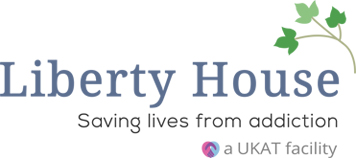
Written by:

Medically Reviewed by:
Last Updated:
March 10th, 2025
Sound Therapy
Think about the gentle rhythm of waves meeting the sand or the soft patter of rain on a quiet evening. It is amazing how something as seemingly simple as the sounds around us can calm the mind and soothe the soul. At Liberty House, we take this natural connection a step further with sound therapy, a powerful tool to support your recovery. As part of our holistic approach, sound therapy offers a fresh and inspiring way to ease stress, rebalance emotions and move forward from addiction.
What is sound therapy?
Sound therapy, sometimes called sound healing or vibrational therapy, is a gentle practice that uses sound and vibration to help your mind and body find balance. Instruments like tuning forks, gongs or singing bowls are often used, and sometimes even your own voice becomes part of the process. These sounds work with the natural rhythms of your brain, helping you feel calmer, less tense and more in tune with yourself.
For those recovering from addiction, sound therapy offers a peaceful way to release built-up stress and emotional pain that substance abuse and addictive behaviours create. It can also provide a much-needed rest from the often intense therapy sessions that rehab treatment is built around.
How does sound therapy work?
On a chemical level, sound therapy uses soothing sounds and vibrations to encourage your brain to release certain chemicals like dopamine and serotonin. These are often called the “feel-good chemicals” because they help you feel relaxed and in a better mood. At the same time, sound therapy lowers cortisol and stress hormones like cortisol, creating the perfect environment for peace and healing.
At the core of sound therapy is the Cooper Sax Model, which the experts at the British Academy of Sound Therapy developed. It involves five stages, or the 5 Rs, to guide your healing process:
1. Responsibility
The first step is to take ownership of the healing journey you are on. Sound therapy requires active participation, so you must first open yourself up to the sounds and their transformative qualities.
2. Resonance
Here, you explore how different sounds resonate with you. Some vibrations might soothe, while others might bring up buried emotions. The ultimate goal is to connect with the sounds that help restore balance and calm.
3. Resistance
Healing isn’t always easy, and this stage is about facing any discomfort or emotional blocks that arise. The sounds can gently stir up feelings that need attention, helping you confront them in a safe, non-judgmental way.
4. Release
This stage is where the magic really happens. As the sounds flow through you, they help you let go of tension, emotional pain or anything weighing you down. It’s like taking a deep breath to refresh and restore your entire self.
5. Reflect
After a sound therapy session, you will then take time to process what has changed. How do you feel now? What has shifted? Reflection helps you hold onto peace and clarity and take them into your everyday life.
Why is sound therapy useful in rehab?
Sound therapy can have many benefits for addiction recovery which is why it is such an important part of Liberty House’s rehab programme:
Emotional exploration and release
Sound therapy provides a safe, calming space where you can delve into the feelings that addiction stirs up without needing to say a thing. Sometimes, the right sound can unlock emotions you didn’t even realise you were holding onto, allowing you to release them in a gentle way. This emotional release can make it easier to open up during other rehab therapies, like CBT or group therapy, helping you work through your recovery more effectively.
Healthy habits
One of the best things about sound therapy is that as you become an active listener, you can bring the practice into your everyday life. We take a daily walk at Liberty House as part of our rehab programme and just listening to the birds and the other sounds of nature can become a deeply healing meditation. In fact, just lying in bed at night and listening to the sound of your own breath can help you let go of any difficult emotions that the day’s therapy stirred up so you can wake up feeling lighter.
Relapse prevention benefits
Sound therapy can also be very useful in your post-rehab life. Whenever stress, triggers or difficult moments threaten to overwhelm you, online sound therapy recordings or even playing a singing bowl yourself can be an important part of relapse prevention. The sounds can ground you in the here and now, create space between triggers and reactions and allow you to calm down before you make a mistake and relapse.
What types of sound are used in sound therapy?
Sound therapy uses a range of tools including drums, shakers, tuning forks and chimes with each instrument offering a unique tone and rhythm. Even your own voice can become a powerful part of the healing process, creating vibrations that soothe and restore.
Some forms of sound therapy go even deeper, using specific instruments to create immersive, transformational experiences:
Singing bowls
Singing bowls produce a gentle, bell-like hum when a mallet is run around their rim. The sound isn’t just heard, it is felt, creating vibrations that ease tension and calm the mind. Singing bowls are often used in meditation or healing sessions and can be placed on or near the body, encouraging deep relaxation and a sense of inner peace.
Gong baths
During gong bath therapy, you are “bathed” in the sound waves of a gong, which produces powerful, deep vibrations. As you lie down and let the sound wash over you, it can help release stress, clear your mind and even support physical health by boosting your body’s natural healing processes. It is a deeply meditative and rejuvenating experience.
What does a Liberty House sound therapy session look like?
Sound therapy typically takes place once a week at Liberty House and is part of every rehab programme. The sessions are two hours long and are led by an experienced sound therapist who will lead you in a guided meditation accompanied by the resonant tones of gongs or other instruments. As the vibrations flow, you will feel your body relax and your mind settle, helping you connect with your inner self.
At the end of the session, there will be time to reflect on the experience as a group, sharing any emotions or insights that came up. It is a gentle and supportive way to process your feelings and should give you a big boost for the rest of the day’s activities.
Embrace the power of sound therapy today
At Liberty House, sound therapy is a chance to find calm and clarity through the gentle hum of sound. Our sound therapy sessions are a space where stress melts away, healing begins, and you can reconnect with those parts of yourself buried by addiction. Paired with our comprehensive rehab treatment programmes, sound therapy can be a key part of lasting recovery. Contact us today and let sound guide you toward sobriety.
Disclaimer:
The availability of therapies may vary across UKAT centres. The specific therapies provided will be determined based on your treatment plan and the programme offered at your chosen facility. All treatments are subject to clinical assessment and programme availability at the time of admission. For further details on the therapies included in your treatment plan, please contact our admissions team.





